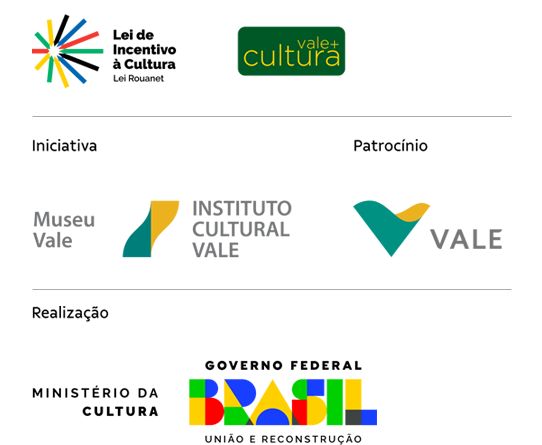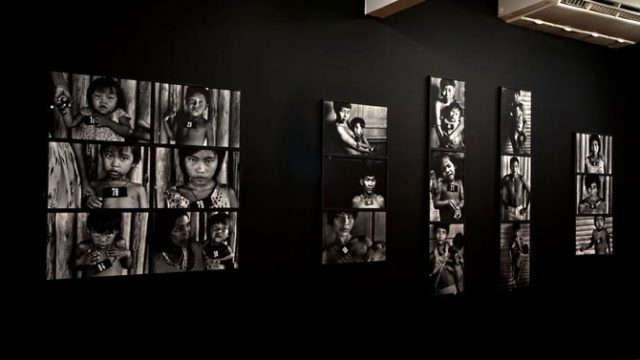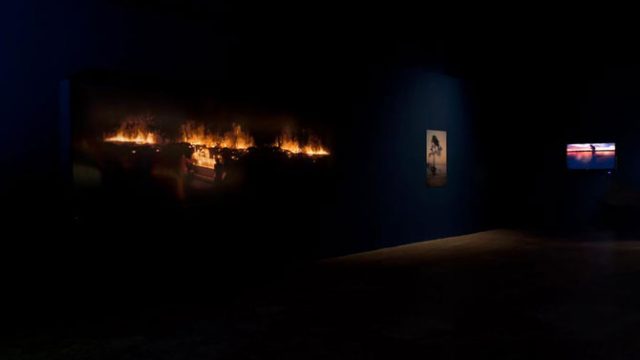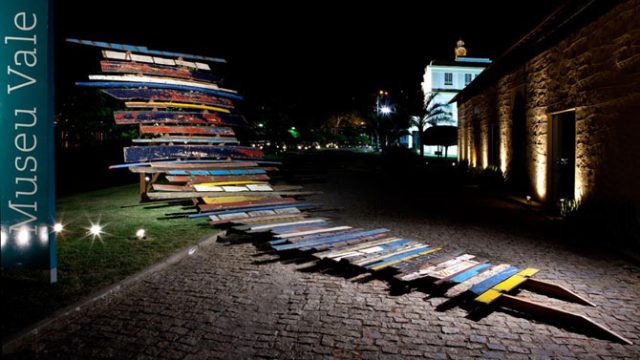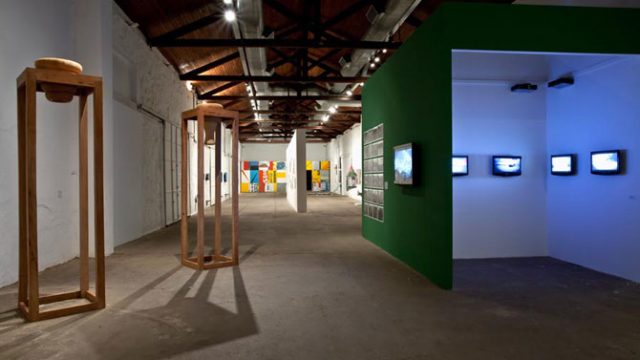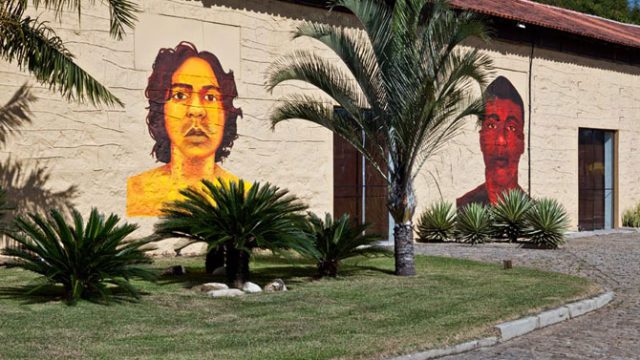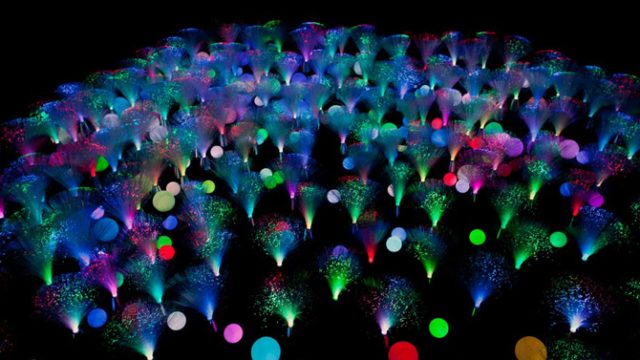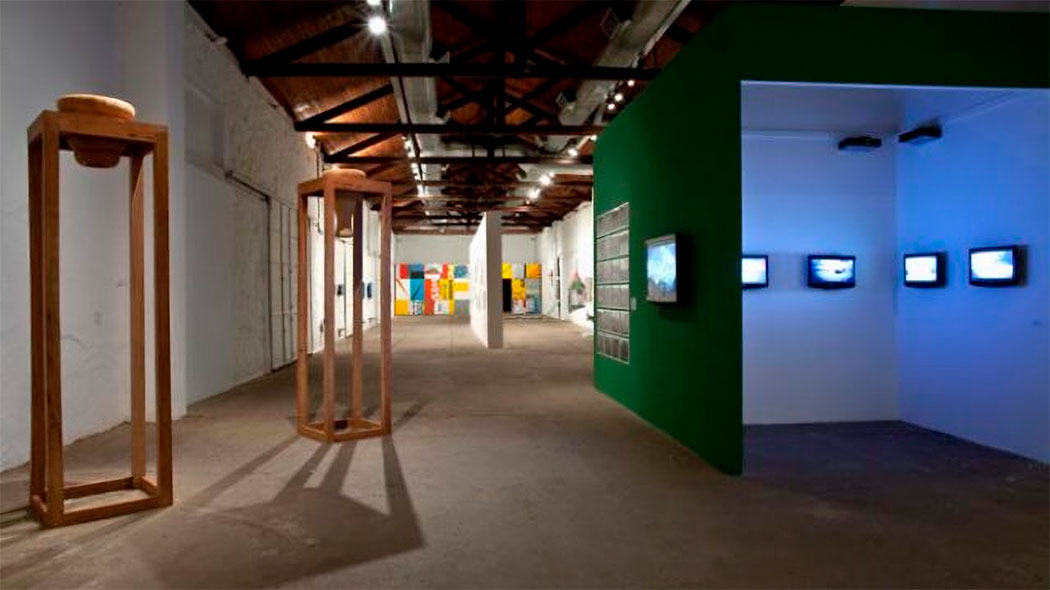
In the International Year of Biodiversity, the Vale Foundation, through the Vale Museum, presents the exhibition “Amazon, the Art”. A recurring theme in contemporary times, this collective exhibition celebrates the Amazon region with a primary focus on revealing artists with distinct roles and trajectories, whether established or in active development, showcasing extremely genuine and interesting works to the country.
Conceived by Paulo Herkenhoff, curated by Orlando Maneschy, the exhibition brings together 31 artists who maintain a fundamental connection with the Amazon region: many were born there, and the majority live and work in the cities of the northern region of Brazil. They conduct research and develop their works, connecting to the world through their art.
Understanding cultural diversity is crucial for establishing a respectful and productive relationship with the environment. The Vale Foundation aims at the economic, environmental, and social development of the territories where it operates, seeking to promote the improvement of the quality of life for communities, working in an integrated manner and respecting the singularities of each one. With this exhibition, the Vale Museum contributes to the dissemination, circulation, and visibility of an originally Brazilian, plural and contemporary art.
Vale Foundation
Artists
Hélio Melo (AC), Grupo Urucum (AP), Roberto Evangelista (AM), Naia Arruda (AM), Thiago Martins de Melo (MA).
Pará: Acácio Sobral, Alexandre Sequeira, Armando Queiroz, Armando Sobral, Alberto Bitar, Berna Reale, Cláudia Leão & Leonardo Pinto, Dirceu Maués, Éder Oliveira, Edilena Florenzano, Elza Lima, Emmanuel Nassar, Lise Lobato, Luiz Braga, Maria Christina, Melissa Barbery, Marcone Moreira, Miguel Chikaoka, Otávio Cardoso, Patrick Pardini, Paula Sampaio, Walda Marques.
Rondônia: Coletivo Madeirista (Joesér Alvarez, Ariana Boaventura and Rinaldo Santos)
Roraima: Claudia Andujar, Orlando Nakeuxima Manihipi-Theri (from the indigenous land Yanomami in Roraima), Katie van Scherpenberg and Cildo Meireles.
Curator
Wild and Contemporary
The Amazon is still a mystery. The green inferno has sparked various fantasies since its exploration began, starting with Francisco Orellana’s encounter with the Icamiabas indigenous warriors, in a continuous flow generated by its various migratory cycles.
Countless and inconsistent processes of integration have occurred over this spectacular and isolated region, despite the establishment of a road connection from the second half of the last century. Nevertheless, the Amazonian continent remains a territory full of unique experiences, although little known to the rest of Brazil.
Its cities, especially the capitals Manaus and Belém, nestled in the forest, maintained a close connection with Europe, ensuring the circulation of cultural goods that, combined with the local inhabitants’ experiences, constituted procedures of cultural mestizaje. These procedures developed between contact with the European continent and the lack of national integration.
In the face of this context of isolations and flows, the singularities of living in the region manifest themselves particularly in the aesthetic experience of artists who inhabit the Amazon and operate in parallel art systems. These systems sometimes bring them close to the rest of the world, and at other times keep them detached from the traffic operated in the south-central part of the country, generating instability in both artistic production and institutional projects for art.
This situation of fragility and inconsistency reflects the policies that have been inscribed in the region throughout its history. On the other hand, these policies have fostered an artistic production less committed to market demands and more focused on relationships with their place of belonging, its brightness, and its socio-cultural peculiarities. This has led artists, both collectively and individually, to create dense and powerful propositions, as seen in the exhibition presented here: “Amazon, the Art”.
In this collection, we will see artists who have been articulating distinct propositions. We invite the observer to enter with slow steps, look calmly, as the native does when penetrating the dense forest, and understand the luminosity and chromatic richness. Observe how local specificities present themselves in relation to global themes and understand how policies are activated in their micro or macro issues.
In “Amazon, the Art”, we see a fragment of contemporary production of rare density, visceral, authentic, inscribed in a peculiar and still little-known territory. Far from wanting to launch a totalizing view, the exhibition points to the need to know more about the region and the country itself, and to understand that what is strange to us may be the key to understanding who we are.
Orlando Maneschy
Curator
Project
Circumstances
1944
At the age of thirteen, I had my first encounter with those ‘marked for death’. It was in Transylvania, Hungary, at the end of the Second World War. My father, paternal relatives, school friends, all marked with the visible, yellow Star of David sewn onto their clothes at chest level to identify them as ‘marked’, to harass them, disturb them, and later deport them to extermination camps. There was a sense in the air that something terrible was about to happen.
Amidst this climate of perplexity, Gyuri invited me for a walk in the park. It was a declaration of love. That’s the only way I can describe his desire for us to walk together. It was something we did guided by intuition. It was a walk just for him to say, ‘We attend the same school. I noticed you. You are special. You are beautiful’.
I, too, sought him out day after day, walking down the street, always at the same time. I knew I would see him en passant. I feel the emotion tighten my throat. On that day in June 1944, we decided to meet and confess our feelings.
The Jewish boy was marked with the yellow star, the Star of David. He was fifteen, and I was thirteen. We walked, moved, without speaking, stealing glances at each other. I knew something important was happening. It was the birth of love. I felt a tingling on my skin. At the end of the walk, I received a timid and silent kiss that barely touched my lips. I remember my lips burning for hours. Love, in such special circumstances, is never forgotten.
By going out with Gyuri publicly, I knew I was challenging my time. I never saw him again. For years, I kept a portrait of Gyuri in the locket I wore around my neck.
1980
Almost forty years later, living in Brazil as a photographer engaged in indigenous issues, I joined some doctors on health relief expeditions.
From 1973 onwards, the Yanomami territory in the Brazilian Amazon was invaded with the opening of a road during the years of the ‘Brazilian miracle’. With mining, the search for gold, diamonds, tin, clandestine and not-so-clandestine prospecting flourished. Many indigenous people fell victim, marked by these dark times.
Our modest rescue group – initially, myself and two doctors – ventured into the Amazon rainforest. The intention was to start organized health work. One of my activities was to register the existence of Yanomami communities on health cards. For this, we hung signs with numbers around the necks of each indigenous person: ‘vaccinated’. It was an attempt at salvation. We created a new identity for them, undoubtedly a system foreign to their culture.
It is the circumstances of this work that I intend to show through these images taken at the time. It is not about justifying the marks placed on their chests. But to make it clear that they refer to a sensitive, ambiguous terrain that can evoke embarrassment and pain. The same pain I felt for love when stepping on the grass in the park, an impossible love with Gyuri.
He died in Auschwitz that same year of 1944.
2008
It is this ambiguous feeling that leads me, sixty years later, to transform the simple record of the Yanomami in the condition of ‘people’ – marked to live – into a work that questions the method of labeling beings for various purposes.
Today, I see this work, an objective effort to order and identify a population at risk of extinction, as something on the border of a conceptual piece.
Claudia Andujar

Contact us
Social networks

